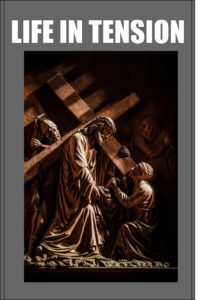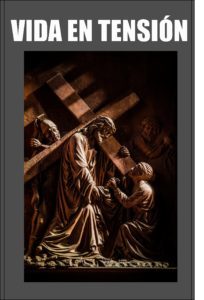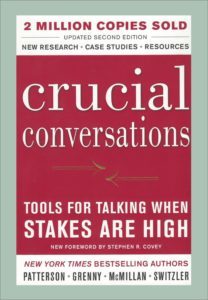Stephen W. Hiemstra's Blog, page 164
April 1, 2020
Water Cooler Observations, April 1, 2020
 By Stephen W. Hiemstra
By Stephen W. Hiemstra
During the spring of 1973 I returned home from college to a new neighborhood in McLean, Virginia where the homes had garages rather than carports. Every day our new neighbors went to and returned from work without leaving their air conditioned houses. An electrical storm the following summer knocked out the power and, with it, the air conditioning. One after the other neighbor came outside to sit on their porch and escape the heat. That was when we finally got to meet them.
Walking in the neighborhood evenings with my wife, Maryam, the past couple weeks, I have seen more kids and adults outside than at any point since my childhood.
Year of the TV Preacher
Over the past two Sundays just about every church that I am associated with (6-8) has started holding services and meditations online. Some have even added midweek online sessions to match Sunday services. TV preacher Joel Olsteen recently reported having broken online attendance records—about five million viewers (link).
Local churches have typically not had a sophisticated online presence and the move online has been challenging. At one church that I know, giving is down about fifty percent in recent weeks.
How are local churches to compete in this new online-only environment?
Two observations come to mind.
First, recognize that local churches are unlikely to compete with Joel Olsteen for media sophistication. Don’t play a game that you are not likely to win.
Second, media sophistication is not what most people want today. People are hurting, lonely, and in need of reassurance—they desperately want to see familiar faces. This is where the local church can shine.
My advice to pastors is to check out what other churches are doing and find a format online that fits your style and audience. Personally, I think that the pastors offering online services from their living room couch with the spouse at their side provide the best fit for the current environment—the visual says from my family to yours. This reassures that pastor and parishioner are in this together.
Stat Wars
The daily news is grim. As a former chaplain, my heart goes out to all those patients and hospital staff contending daily with the grim reaper without family support. As field hospitals are built and American companies have diverted their facilities into producing medical supplies, we are writing the book on pandemic response.
Meanwhile, I feel like a contestant in a macabre game show as I spend my days reverse engineering the statistics that Dr. Fauci reports on the daily news. He has earned my respect repeatedly as he focuses on keeping the media and the administration focused on a reasoned response to the crisis. Science has become a contact sport. Perhaps, it always was.
Corona Virus Cases, Deaths, and Mortality Rates by Region, March 31, 2020
Countries
Region
Cases
Deaths
Mortality Rates
Count
Change
Count
Change
Western Europe
391,444
7.6%
26,292
11.3%
6.7%
Eastern Europe
13,585
7.0%
196
16.0%
1.4%
Africa
5,043
10.7%
160
15.1%
3.2%
Middle East
62,919
11.2%
3,032
5.9%
4.8%
Asia
104,090
1.1%
3,603
0.6%
3.5%
Australia and New Zealand
5,204
12.0%
20
17.6%
0.4%
Pacific
6,608
15.6%
280
10.7%
4.2%
Atlantic
51
8.5%
1
0.0%
2.0%
North America
172,248
15.3%
3,265
26.8%
1.9%
Central America
2,712
8.3%
66
29.4%
2.4%
Caribbean
1,375
7.2%
52
8.3%
3.8%
Latin America
12,519
9.6%
305
18.2%
2.4%
World
777,798
8.7%
37,272
11.0%
4.8%
Source: European Centre for Disease Prevention and Control
A key estimate by Dr. Fauci this week was that this pandemic would cost two hundred thousand American lives. Two hundred thousand is two percent of ten million corona virus cases.
Two percent has been the estimated mortality rate for the United States reported since this pandemic began and probably comes from the 1918 experience with the Spanish flu. Today’s rate for the U.S. is 1.9 percent, while the world average is now 4.8 percent (see the table). Italy has a mortality rate today that is 11.4 percent.
Ten million is an estimate of the eventual total case load of corona virus cases for the U.S. Meanwhile, the U.S. population is around three hundred million, suggesting a much larger number of cases.
If I had to guess, Dr. Fauci’s estimate is the result of a government oversight committee negotiation, focused on managing the optics. While this sounds political, managing fear is on every leader’s mind because fear compounds the underlying problem. Whether you consider the mortality rate or the caseload assumed in this calculation, the estimate is the most optimistic figure that could be reported with a straight face.
The two million death figure, which entered the briefing styled as a worst case scenario, arises from considering the population, not caseloads, and reflects a more reasonable set of assumptions. It may still be optimistic. Two percent of three hundred million is about six million, not two and, if the U.S. eventually sees worldwide mortality rates (4.8 percent today), then you have to more than double that figure.
Endgame
The statistics on mortality depend critically on how one expects this pandemic to end.
Social distancing works to reduce mortality rates by keeping the number of critically ill patients under the carrying capacity of the hospital system, thereby minimizing deaths.
For example, if the Washington metro area has thousand beds with ventilators and support staff, and the caseload remains under a thousand, then deaths are minimized (1.9 percent). As the caseload increases over a thousand, the mortality rate rises (4.8 to 11.4 percent). The mortality rate cannot remain at zero because even well-staffed and supplied hospitals will lose patients with pre-existing conditions.
This pandemic ends when one of two things happens. Either we develop an effective vaccine or so many people get the virus that it can no longer spread (herd immunity). Best estimates that a vaccine is 12-18 months away so the most likely case is that the virus burns itself out like a forest fire that stops spreading because it runs out of forest. This is why Dr. Fauci’s estimate is optimistic—ten million cases is not the forest.
Caveats
Three caveats are worth mentioning.
First, researchers have been working to develop a therapy involving a direct transfer of antibodies from patients already infected to those in dire straits. This is a novel approach, but it is untested. Other existing therapies are also being tested that relieve the stress that patients experience, improving their chances of survival.
Second, researchers will soon have a quick-turnaround test for corona virus antibodies. While this may not yield a new therapy, it may allow those who have recovered to return safely to work—a critical need in standing up our troubled economy. For many people, getting back to work not only means that they can pay their bills, it improves their access to medical services.
Third, existing conditions kill by offering a one-two punch combined with the corona virus. Continuing to work out and keep a positive attitude improve your chances of survival because a positive attitude strengthens your immune system.
Flu Versus Corona Virus
The story about the flu is helpful in understanding our current dilemma with the corona virus. Influenza is a human pathogen, which implies that the human race has a long history of developing immunity to flu. Johns Hopkins University research recently reported annual deaths ranging from 12,000 to 61,000 deaths in the U.S. per year. These statistics are well-known, which is why I get a flu shot every year.
While the annual death toll from the flu currently seems high relative to this epidemic, the above statistics are annual numbers while the current death toll from corona virus covers only a couple of weeks. Annualizing (take a weekly death figure and multiply by 52) the current number of deaths from corona virus (3,170 today) yields a number from 80-100 thousand, still a low number compared to estimates above that may suggest an alternative way to understand the Fauci estimate.
****************************************************************************
Keep in mind that annualizing losses is wildly sensitive to your technique for coming up with a weekly rate from a number increasing exponentially over time. Averages (a linear estimator) are not representative of nonlinear processes (like exponentially growing numbers), which to the non-mathematically inclined means that this is a very weak method for forecasting mortality rates.
****************************************************************************
Corona virus is not a human pathogen, but a virus that has jumped species from bats to pangolins to humans (link). This is why the virus is so lethal and why we do not have a natural immunity. Apparently, the Black Plague was a pathogen with a similar genesis.
Gethsemane Moment
When you are in pain or afraid, where do you turn?
When Jesus was facing death in the Garden of Gethsemane, he turned to God instead of his pain and fear.
Then Jesus went with them to a place called Gethsemane, and he said to his disciples, “Sit here, while I go over there and pray.” And taking with him Peter and the two sons of Zebedee, he began to be sorrowful and troubled. Then he said to them, “My soul is very sorrowful, even to death; remain here, and watch with me.” And going a little farther he fell on his face and prayed, saying, “My Father, if it be possible, let this cup pass from me; nevertheless, not as I will, but as you will.” (Matt 26:36-39 ESV)
We face a Gethsemane Moment today worldwide. Where will you turn?
Water Cooler Observations, April 1, 2020
Also see:
Water Cooler Observations, March 25, 2020
Corona Virus Versus the Flu
Black Plague
CDC Flu Statistics
Managing Change
Believer’s Prayer
Other ways to engage online:
Author site: http://www.StephenWHiemstra.net
Publisher site: http://www.T2Pneuma.com.
Newsletter: https://bit.ly/Meet_2020
The post Water Cooler Observations, April 1, 2020 appeared first on T2Pneuma.net.
March 31, 2020
Savage Listens to Stories
 John Savage. 1996. Listening & Caring Skills: A Guide for Groups and Leaders. Nashville: Abingdon Press.
John Savage. 1996. Listening & Caring Skills: A Guide for Groups and Leaders. Nashville: Abingdon Press.
Reviewed by Stephen W. Hiemstra
Being fully present when listening to someone is tough. It requires setting aside our own egos to hear not only what the person is saying but what is not being said—the backstory. The backstory is important because language is laconic; tone of voice and body language provide the context. John Savage’s book, Listening and Caring Skills, helps to start down the road of being fully present in listening to your family, friends, and colleagues.
Introduction
Listening and Caring Skills focuses on preparing pastors for ministry, but the principles apply more generally. The book starts with an introduction defining the problem and follows with three major sections: Basic listening skills; hearing the story, and advanced listening skills.
Communication Gap
Savage starts by defining the listening problem as closing the gap between what is said and what is heard (17). This gap can be huge because the speaker desires to communicate feelings, intentions, attitudes, and thoughts. This internal desire is actually communicated with words, tone of voice, and body language.
Words communicate about 7 percent of the message; tone of voice communicates 38 percent; and the remaining 55 percent is communicated through body language (16). Focusing on just the words used in written communication leaves out important information needed in making decisions.
Consider the potential for conflict just because of weak communication. Skyping can communicate words, tone of voice, and some body language. Telephone conversation can communicate words and tone voice but no body language. Email communicates only the words—unless you are really good with emoticons! Clearly, if I use a form of communication that is incomplete, the potential to be misunderstood grows in proportion to what is left out. Face-to-face communication at least allows a complete set of details to be communicated.
Five Styles of Communication
Once we are face to face, communication is technically feasible, but we do not normally engage everyone at the same level. Savage lists five styles of communication: direct and open, open but partial, distorted full information, distort and delete information, and only non-verbal communication (15-16). At best communication is an art: people lie; people don’t listen’; people run off. Being fully present is a gift that we give to those who we really care about. In my experience, people notice immediately when you are really listening.
Fogging
A lesson worth the price of the book is a technique called fogging which is often used by politicians and lawyers. In fogging one only answers the part of the question that one agrees with.
The most famous example of fogging occurred in Matthew 22:15-22 when Jesus was baited with the question: is it lawful to pay taxes…? If he answers yes, then the Jews will be offended; if he answers no, then the Romans will be offended. Instead of answering, Jesus asks to see a coin–everyone agrees on the coin used to pay the tax. When one fogs, one does not answer the whole question and does not become defensive—even when the question is hostile. Fogging allows the conversation to continue without becoming emotionally charged.
Listening for the Five Types of Stories
Savage observes that in order for people to feel like they have been heard, you need to identify the emotional content of what they are saying. Oftentimes, this emotional content takes the form of one of five story types that he outlines (95), including.
Anniversary. An anniversary is a story connected to a date on the calendar. Perhaps someone important died or had an serious accident on a particular date. In the story of the patient, the date was a birthday. The most famous date at the time of Jesus was the Exodus of the people of Israel from Egypt which they celebrated as Passover each year.
A “I know a man who” story. In this case, the person under discussion is normally the person speaking because the subject matter is too sensitive. In the Bible, we read: “I know a man in Christ who fourteen years ago was caught up to the third heaven– whether in the body or out of the body I do not know, God knows.”(2 Cor 12:2)2.
A transition story has three parts—the past, the present, and the future. A hospital visit is normally a transition story. University studies are also a transition with three parts. A transition obvious in the Bible is the story of the Exodus when the people of Israel left the land of Egypt, went into the desert for forty years, and afterwards entered the Promised Land (Bridge 2003, 43). It is interesting that the people of Israel learned to depend on God during their time in the desert.
A story from the past with current meaning. This is the typical story from the Bible, but this type of story gets special mention in the context of the Lord’s Supper where we read: “And he took bread, and when he had given thanks, he broke it and gave it to them, saying, This is my body, which is given for you. Do this in remembrance of me.”(Luke 22:19)
A reinvestment story. This is a story like economist becomes pastor. That was then; this is now. In the Bible we see this type of story in the conversion of Paul from a persecutor of the church into an evangelist for Christ.
If you can identify the story that a person is telling, chances are good that you will connect with them at a deeper, emotional level.
Assessment
Savage’s Listening & Caring Skills is a book that I have recommended, given away, taught, and preached about. Active listening skills are of value in dealing with your children, difficult co-workers, and demanding supervisors. In the church, pastors can benefit from periodically reviewing Savages principles and teaching them to those in leadership. It is simply a great book.
References
William Bridge. 2003. Managing Transitions: Making the Most of Change. Cambridge: Da Capo Press. (Review)
Savage Teaches Listening; Hears Unheard Stories
Also see:
Crucial Conversations Target Productive Dialog
Warren Writes to Grow Characters
Books, Films, and Ministry
Other ways to engage online:
Author site: http://www.StephenWHiemstra.net,
Publisher site: http://www.T2Pneuma.com.
Newsletter: https://bit.ly/Meet_2020
The post Savage Listens to Stories appeared first on T2Pneuma.net.
March 30, 2020
Godly Grief: Monday Monologues (podcast) March 30, 2020
 Stephen W. Hiemstra 2020 (Ken Burtram Photography)
Stephen W. Hiemstra 2020 (Ken Burtram Photography)By Stephen W. Hiemstra
This morning I will share a prayer and reflect on Godly Grief. After listening, please click here to take a brief listener survey (10 questions).
To listen, click on this link.
Hear the words; Walk the steps; Experience the joy!
Godly Grief: Monday Monologues (podcast) March 30, 2020
Also see:
Monday Monologue On March 26, 2018
Other ways to engage online:
Author site: http://www.StephenWHiemstra.net,
Publisher site: http://www.T2Pneuma.com.
Newsletter: https://bit.ly/Meet_2020
The post Godly Grief: Monday Monologues (podcast) March 30, 2020 appeared first on T2Pneuma.net.
March 29, 2020
Hopeful Prayer
 By Stephen W. Hiemstra
By Stephen W. Hiemstra
Lamb of God,
Thank you for the hope that comes in the midst of life and death.
Be especially present with those that grieve—grieve over the loss of a loved one, grieve over a life not lived according to plan, grieve over sin and brokenness and shame.
Show us the road to recovery, wholeness, and restoration; show us the plans that you have laid out for us—plans for welfare, not evil, for a future, and a hope in you.
Grant us godly grief that produces repentance and redemption and new life in joy.
In the power of your Holy Spirit, wipe away our tears so that we might behold the Father.
In Jesus’ name, Amen.
Hopeful Prayer
Also see:
Believer’s Prayer
Other ways to engage online:
Author site: http://www.StephenWHiemstra.net
Publisher site: http://www.T2Pneuma.com.
Newsletter: https://bit.ly/Meet_2020
The post Hopeful Prayer appeared first on T2Pneuma.net.
Oración de Esperanza
 Por Stephen W. Hiemstra
Por Stephen W. Hiemstra
Cordero de Dios,
Gracias por la esperanza que viene en medio de la vida y la muerte.
Esté especialmente presente con aquellos que lloran—lloran sobre la pérdida de alguien amado; lloran sobre una vida no vivida según el plan; lloran sobre el pecado y el quebrantamiento y la vergüenza.
Muéstranos el camino hacia la recuperación, la integridad, y restauración; muéstranos los planes que nos has trazado—planes para bienestar, no para el mal, para un futuro, y una esperanza en tí.
Concédenos una pena piadoso que produce el arrepentimiento y redención y una nueva vida de alegría.
En el poder de tu Espíritu Santo, limpia nuestras lágrimas para que podamos contemplar al Padre.
En el nombre de Jesús, Amén.
Oración de Esperanza
Ver también:
Oración del Creyente
Otras formas de participar en línea:
Sitio del autor: http://www.StephenWHiemstra.net,
Sitio del editor: http://www.T2Pneuma.com.
Boletín informativo: https://bit.ly/Meet_2020
The post Oración de Esperanza appeared first on T2Pneuma.net.
March 27, 2020
Death Means Resurrection
 When Jesus saw her weeping, and
When Jesus saw her weeping, and
the Jews who had come with her also weeping,
he was deeply moved in his spirit and greatly troubled.
And he said, Where have you laid him? …
When he had said these things,
he cried out with a loud voice, Lazarus,
come out. (John 11:33-34,43)
By Stephen W. Hiemstra
The two-part form of a lament sets us on a spiritual journey. When Jesus weeps, the dead are raised (Mark 5:38–41). When Jesus dies, our lives are redeemed and we find hope (1 Pet 1:3), as the Apostle Paul writes:
that I may know him and the power of his resurrection, and may share his sufferings, becoming like him in his death, that by any means possible I may attain the resurrection from the dead. (Phil 3:10-11)
Paul advises us to imitate Christ and to place our emotions in God’s service (e.g. Rom 12:14–15) so that the physical world might itself be redeemed (Rom 8:22).
Christian hope redeems our mourning. The hope of resurrection permits us to look beyond the grief in this life to our future in Christ, as the Prophet Jeremiah wrote so eloquently:
For I know the plans I have for you, declares the LORD, plans for welfare and not for evil, to give you a future and a hope. (Jer 29:11)
We hear an echo of Jeremiah in the Sermon on the Mount, when he writes about anxiety:
Therefore I tell you, do not be anxious about your life, what you will eat or what you will drink, nor about your body, what you will put on. Is not life more than food, and the body more than clothing? (Matt 6:25)
Anxiety is a form of grieving over life’s daily challenges—what to eat or what to wear—in a kind of despair over present circumstances.
As Christians, we know that present circumstances give way to a future in Christ—death does not have the final word (1 Thess 4:13). Because our future is in Christ, we are like children who can delight in hearing scary stories knowing that the stories have a happy ending. The Apostle Paul writes:
For godly grief [θεὸν λύπη; “theo lupe”] produces a repentance that leads to salvation without regret, whereas worldly grief produces death. (2 Cor 7:10)
The word for grief that Paul uses means: “pain of mind or spirit, grief, sorrow, affliction” (BDAG 4625). We grieve over our sin; we lament over our brokenness; and once we have poured it all out, we turn to God and repent, as the Psalmist writes:
Those who sow in tears shall reap with shouts of joy! He who goes out weeping, bearing the seed for sowing, shall come home with shouts of joy, bringing his sheaves with him. (Ps 126:5–6)
This sounds similar to Luke’s version of the Second Beatitude: “Honored are you who weep now, for you shall laugh.” (Luke 6:21)
Through godly grief and repentance God gently leads us to salvation
Death Means Resurrection
Also see:
Preface to a Life in Tension
Other ways to engage online:
Author site: http://www.StephenWHiemstra.net Publisher site: http://www.T2Pneuma.com
Newsletter: https://bit.ly/Meet_2020
The post Death Means Resurrection appeared first on T2Pneuma.net.
La Muerte Significa Resurrección
 Y cuando Jesús la vio llorando, y a los Judíos
Y cuando Jesús la vio llorando, y a los Judíos
que vinieron con ella llorando también,
se conmovió profundamente en el espíritu, y se entristeció.
¿Dónde lo pusieron? . . . Habiendo dicho esto,
gritó con fuerte voz: ¡Lázaro, sal fuera!
(John 11:33-34, 43)
Por Stephen W. Hiemstra
Esta forma de dos partes de un lamento nos pone en un viaje espiritual. Cuando Jesús llora, los muertos resucitan (Mark 5:38–41). Cuando Jesús muere, nuestras vidas se redentan y encontramos esperanza (1 Pet 1:3), como el Apóstol Pablo escribe:
y conocerlo a el, el poder de Su resurrección y la participación en sus padecimientos, llegando a ser como el en su muerte, a fin de llegar a la resurrección de entre los muertos. (Phil 3:10-11)
Pablo nos aconseja que imitamos a Cristo y que pongamos nuestra emociones en el servicio de Dios (e.g. Rom 12:14–15) para que el mundo físico mismo pueda también ser redimido (Rom 8:22).
La esperanza redima nuestro luto. La esperanza de la resurrección permitenos a mirar más allá del dolor en esta vida hacia nuestro futuro en Cristo, como el Profeta Jeremías escribió tan elegantamente:
Porque yo sé los planes que tengo para ustedes, declara el SEÑOR planes de bienestar y no de calamidad, para darles un futuro y una esperanza. (Jer 29:11)
Escuchamos un eco de Jeremias en el Sermón del Monte, cuando escribe sobre la ansiedad:
Por eso les digo, no se preocupen por su vida, qué comerán o qué beberán; ni por su cuerpo, qué vestirán. ¿No es la vida más que el alimento y el cuerpo más que la ropa? (Matt 6:25)
La ansiedad es una forma de duelo sobre los desafíos diarios de la vida—qué comer o qué ropar—en una especie de desesperación por las circunstancias actuales.
Como Cristianos, sabemos que circunstancias actuales dan paso a un futuro en Cristo—la muerte no tiene la última palabra (1 Thess 4:13). Debido a que nuestro futuro está en Cristo, somos como hijos que pueden deleitarse en escuchando historias de miedo por que saber que las historias tienen un final feliz. El Apostle Pablo escribe:
Porque la tristeza [θεὸν λύπη; “theo lupe”] que es conforme a la voluntad de Dios produce un arrepentimiento que conduce a la salvación, sin dejar pesar; pero la tristeza del mundo produce muerte. (2 Cor 7:10)
La palabra para la tristeza que Pablo usa significa: “dolor mental o espíritual, dolor, tristeza, aflicción” (BDAG 4625).1 Nos afligimos por nuestro pecado; nos lamentamos por nuestra fragilidad; y una vez lo hemos derramado todo, nos volvemos a Dios y nos arrepentimos, como escribe el salmista:
Los que siembran con lágrimas, segarán con gritos de júbilo. El que con lágrimas anda, llevando la semilla de la siembra, En verdad volverá con gritos de alegría, trayendo sus gavillas. (Ps 126:5-6)
Este suena similar de la versión de Lucas de la segunda Beatitud: “Honrdado ustedes los que ahora lloran, porque reirán” (Luke 6:21).
A través del dolor piadoso y arrepentimiento Dios nos conduce suavemente a salvación.
Notas
1 The word for grief that Paul uses means: “pain of mind or spirit, grief, sorrow, affliction” (BDAG 4625).
Ver también:
Gospel as Divine Template
Otras formas de participar en línea:
Sitio del autor: http://www.StephenWHiemstra.net,
Sitio del editor: http://www.T2Pneuma.com.
Boletín informativo: https://bit.ly/Meet_2020
The post La Muerte Significa Resurrección appeared first on T2Pneuma.net.
March 25, 2020
Water Cooler Observations, March 25, 2020
 By Stephen W. Hiemstra
By Stephen W. Hiemstra
Those of you who know me know that in my first career, I was a financial engineer and economist with various federal agencies, as the photo to the right shows.
Starting Wednesday, March 25, 2020, I am going to lean into my background as a recovering economist to offer observations on our distracting world here on T2Pneuma.net. Let me know your questions if this piques your interest.
Corona Virus
During the past week, I was asked by a pastor friend to report on international corona virus statistics. The European Centre for Disease Prevention and Control,An agency of the European Union, reports daily case and deaths statistics for 166 nations around the world.
These statistics show that mortality rates different significantly by country and region. These differences reflected differing levels of testing, differences in the local spread of the virus, and differing intervention capabilities.
Corona Virus Cases, Deaths, and Mortality Rates by Region, March 24, 2020
Countries
Region
Cases
Deaths
Mortality Rates
Count
Change
Count
Change
Western Europe
186,347
13.9%
10,108
16.5%
5.4%
Eastern Europe
5,374
14.9%
40
25.0%
0.7%
Africa
1,689
31.0%
52
23.8%
3.1%
Middle East
28,696
8.6%
1,881
7.9%
6.6%
Asia
96,397
0.8%
3,443
0.7%
3.6%
Australia and New Zealand
1,965
8.5%
7
0.0%
0.4%
Pacific
3,143
41.7%
134
14.5%
4.3%
Atlantic
13
0.0%
0
#DIV/0!
0.0%
North America
48,105
31.3%
614
25.6%
1.3%
Central America
927
13.9%
13
62.5%
1.4%
Caribbean
405
16.4%
5
0.0%
1.2%
Latin America
4,980
18.6%
68
28.3%
1.4%
World
378,041
11.7%
16,365
12.1%
4.3%
Source: European Centre for Disease Prevention and Control
Mortality rate hot spots include Italy (9.5 %), Indonesia (8.5 %), Iran (7.9 %), Spain (6.6 %), UK (5.0 %), Netherlands (4.5 %), France (4.3 %), and China (4 %). This list changes daily. By contrast, the U.S. rate is 1.3 percent. Other countries with high rates do not report enough cases to have confidence in the figures.
This crisis will not end until the daily changes in the number of cases begins to decline and mortality rates begin to fall. Currently, worldwide the number of cases increased over yesterday by 11.7 percent and the average mortality rates for reported cases was 4.3 percent.
Testing Implications
While most testing today is on patients with obvious symptoms, I look forward to a wider field of testing. South Korean data that I saw earlier in the week showed a significant number of young people testing positive who perhaps were asymptomatic.
Several aspects of this asymptomatic phenomena are important. While most commentators have focused on the potential for these people to spread the virus, we need to know who has effectively been inoculated. Before anyone talked about the corona virus in January, my wife was horribly sick with similar symptoms–she never previously took any sick leave. Afterwards, I had a head cold have self-quarantined the past two weeks. If either or both of us are now immune from getting corona virus, then we both need to be out helping others.
The punchline in this discussion is the question: when and how do we stand down safely as a nation from the quarantines? Politicians have begun to talk about this issue. Those who have recovered from the virus presumably have immunity and can safely return to work after some point, but we need to know from physicians when it is safe to do so.
Financial Implications
As a former financial regulator, I worry about the financial system with so many people out of work. Bank regulators normally are required by law and regulation to write off non-performing loans from capital after 90 days. By June, many institutions will be hitting that trigger. While regulators can waive these requirements temporarily, the longer this crisis lingers the more pressing the concern will be.
Insolvent banks are unlikely to make new loans and foreclosures will hit young workers and minorities harder than other groups whose employment is more secure. For those already strapped with student debt, the bind will grow even faster. This outcome could change election outcomes and permanently change people’s attitudes about credit and investing. My grandfather nearly lost the farm in the Great Depression of the 1930s and the experience forever changed his attitude about banking.
Regulators worry about insolvent banks because they have the perverse incentive to take risky bets. If you are going to fail anyway, why not bet the farm, so to speak? Changing accounting rules does not completely negate this effect because then bankers are investing someone else’s money, not their own.
Gethsemane Moment
When you are in pain or afraid, where do you turn? When Jesus was facing death in the Garden of Gethsemane, he turned to God instead of his pain and fear.
Then Jesus went with them to a place called Gethsemane, and he said to his disciples, “Sit here, while I go over there and pray.” And taking with him Peter and the two sons of Zebedee, he began to be sorrowful and troubled. Then he said to them, “My soul is very sorrowful, even to death; remain here, and watch with me.” And going a little farther he fell on his face and prayed, saying, “My Father, if it be possible, let this cup pass from me; nevertheless, not as I will, but as you will.” (Matt. 26:36-39 ESV)
We face a Gethsemane Moment today worldwide. Where will you turn?
Water Cooler Observations, March 25, 2020
Also see:
Believer’s Prayer
Other ways to engage online:
Author site: http://www.StephenWHiemstra.net
Publisher site: http://www.T2Pneuma.com.
Newsletter: https://bit.ly/Meet_2020
The post Water Cooler Observations, March 25, 2020 appeared first on T2Pneuma.net.
March 24, 2020
Crucial Conversations Target Productive Dialog
 By Stephen W. Hiemstra
By Stephen W. Hiemstra
Kerry Patterson, Joseph Grenny, Ron McMillan, and Al Switzler. 2012. Crucial Conversations: Tools for Talking When Stakes Are High. New York: McGraw-Hill.
Review by Stephen W. Hiemstra
My economic studies taught me that decision processes focused on the scientific method—objective, dispassionate, well-thought out. Boy, did that ever mislead me! This misconcept left I unprepared for white-knuckle office negotiations and I despaired that I represented my own ideas poorly in discussions. When McGraw-Hill published Crucial Conversations, I immediately ordered a copy.
Introduction
What is a crucial conversation? The authors define a crucial conversation as: a discussion between two or more people where (1) stakes are high, (2) opinions vary, and (3) emotions run strong (3). They observe that three responses to these white-knock conversations can occur: we can avoid them, handle them badly, or handle them well (4). Their claim is that high-performance professionals earn their pay by telling supervisors discretely what they do not care to hear (10). The more typical response is silence (12). The author further claim that open conversation allows organizations to respond more quicky to crises, have fewer on-the-job injuries, save money, reduce decision costs, and reduce workplace bullying (12-13). Wow!
Organization
The authors organize Crucial Conversations into eleven chapters where the details matter less important than to stay in dialog. A dialog is a two-way conversation where both parties contribute to the discussion (pool of information) and no one feels threatened. Honesty and openness are keys to ongoing dialog. Clearly, keeping the lines of communication open is important in avoiding becoming side-tracked. A key starting point is to know what you really want and stay on theme. This is not easy because when tempers flare, people often personalize the discussion (punishing) and bring up unrelated grievances (whining). Not all wrongs can be righted (38-40). Adrenaline poses its own problem. Stay on theme.
Handy Tips
The authors provide a large number of handy tips for managing particular problems in crucial conversations. One tip worth the ticket of admission is the author’s breakdown of a dialog into four stages: presenting facts (see and hear), telling a story, feeling, and acting. They observe that once emotions take over actions get locked in.
The formation of productive stories presents the last best chance to channel a dialog towards useful action. An infinite number of stories can be told, but not all comport well with the facts or are organizationally helpful. Three kinds of bad (clever) stories—victim, villain, and helpless stories—arise that are usually counter-productive (116-119). Claiming victimhood means accepting no responsibility for what happens next or even offering to help turn things around. The same is true for pointing a finger at a “villain” or claiming a lack of power to change things. Avoiding these counter-productive stories lays the groundwork for telling stories that solve organizational problems.
Assessment
Crucial Conversations is a helpful book. I have recommended this book to family members and close friends undergoing stressful workplace transitions. This book challenges us to commit key debating strategies to memory. White knuckle conversations often cannot always be anticipated and often take place without warning. Consequently, read the book carefully, underline key points, and review these points before walking into stressful meetings.
Crucial Conversations Target Productive Dialog
Also see:
Savage Teaches Listening; Hears Unheard Stories
Warren Writes to Grow Characters
Books, Films, and Ministry
Other ways to engage online:
Author site: http://www.StephenWHiemstra.net,
Publisher site: http://www.T2Pneuma.com.
Newsletter: https://bit.ly/Meet_2020
The post Crucial Conversations Target Productive Dialog appeared first on T2Pneuma.net.
March 23, 2020
Lament over Sin: Monday Monologues (podcast) March 23, 2020
 Stephen W. Hiemstra 2020 (Ken Burtram Photography)
Stephen W. Hiemstra 2020 (Ken Burtram Photography)By Stephen W. Hiemstra
This morning I will share a prayer and reflect on Lament over Sin. After listening, please click here to take a brief listener survey (10 questions).
To listen, click on this link.
Hear the words; Walk the steps; Experience the joy!
Lament over Sin: Monday Monologues (podcast) March 23, 2020
Also see:
Monday Monologue On March 26, 2018
Other ways to engage online:
Author site: http://www.StephenWHiemstra.net, Publisher site: http://www.T2Pneuma.com.
Newsletter: https://bit.ly/Meet_2020
The post Lament over Sin: Monday Monologues (podcast) March 23, 2020 appeared first on T2Pneuma.net.



